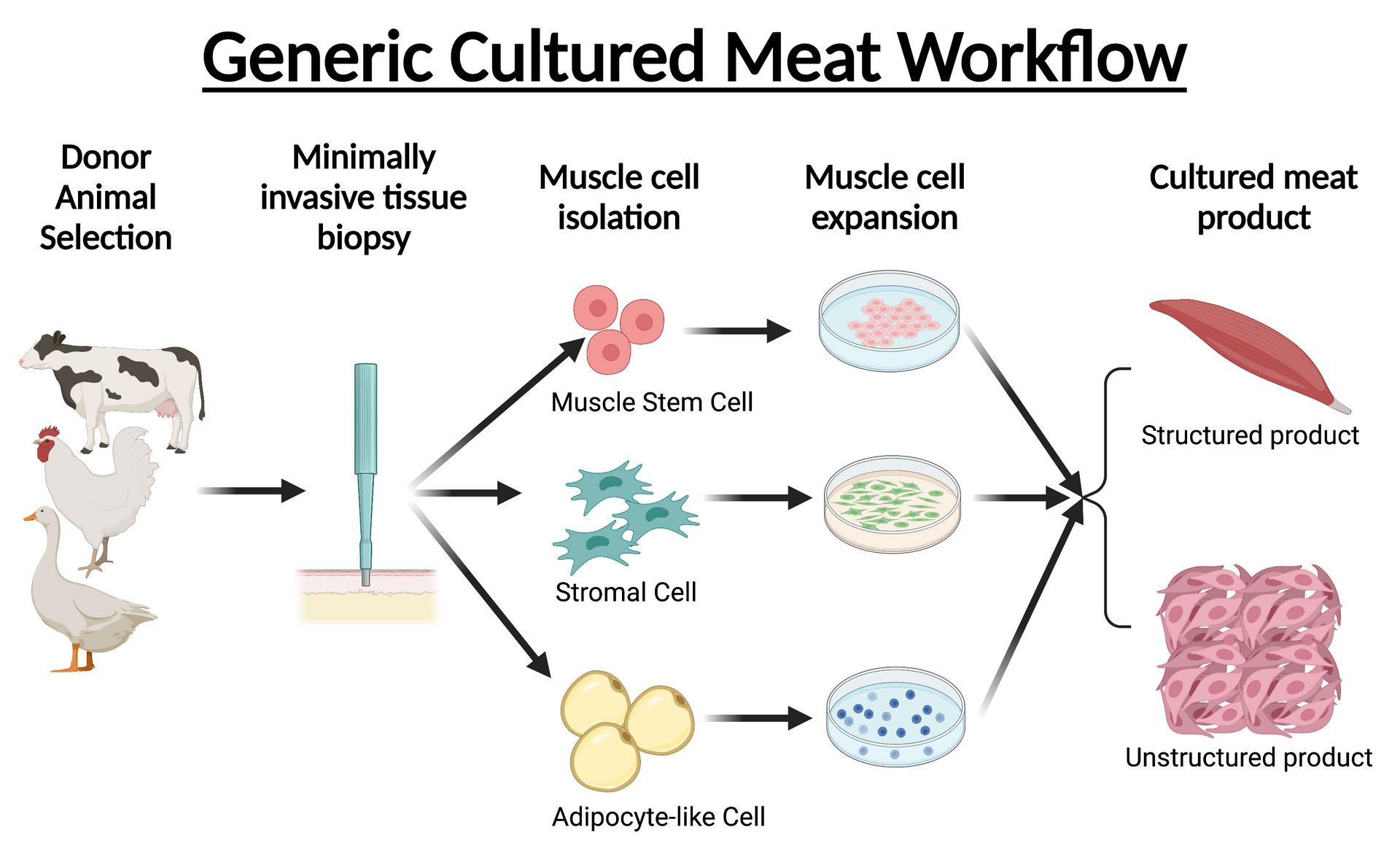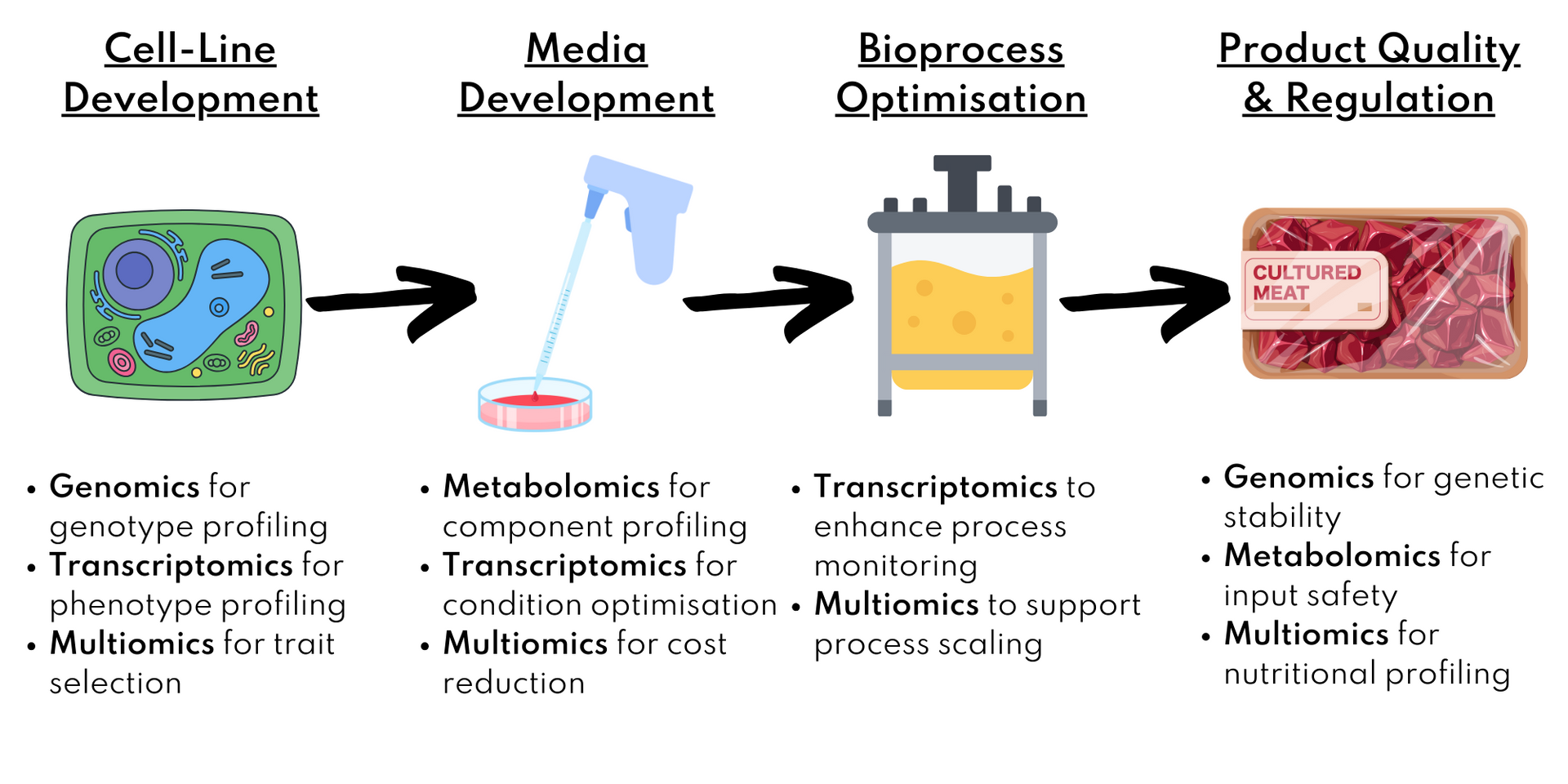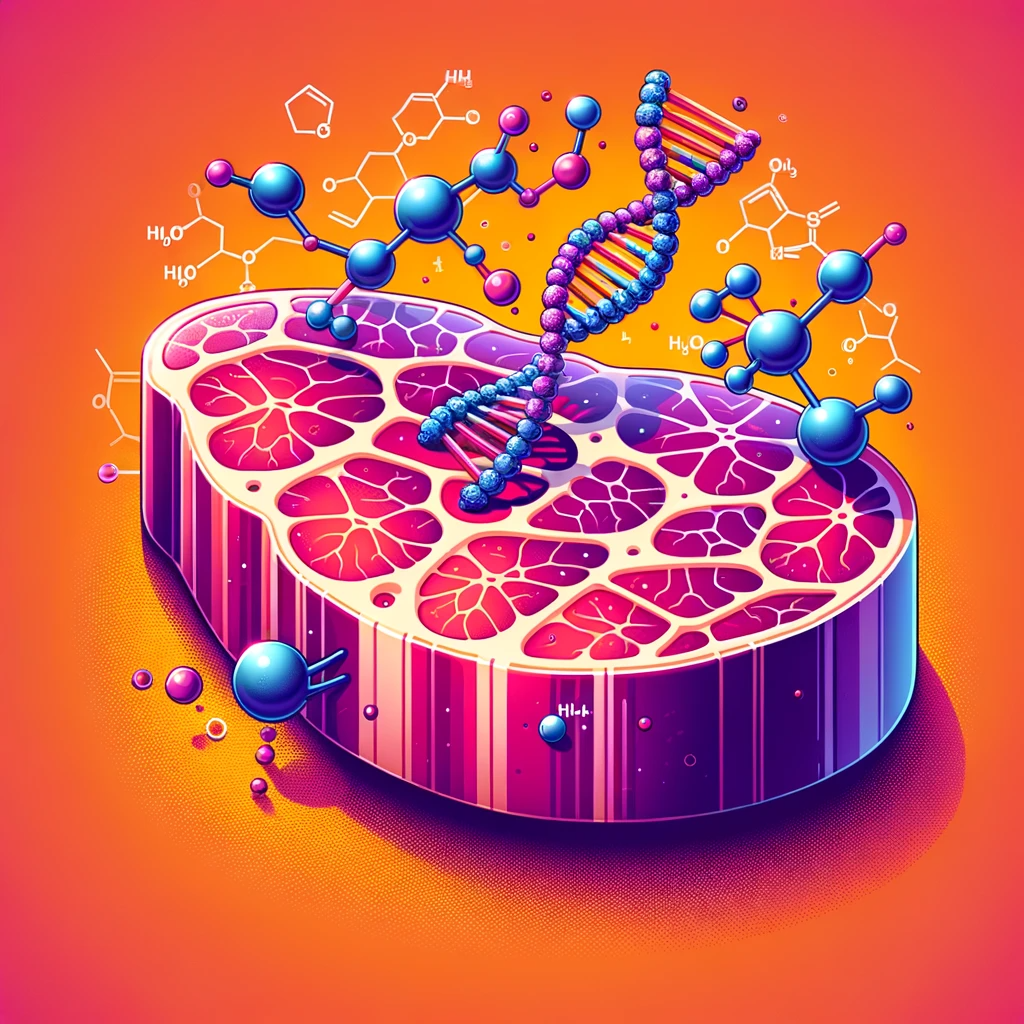Introduction
Welcome back to Arta’s blog!
In our first post, we explored why Omics technologies are potential game-changers in cultured meat science and production. Touching on the incredibly hard problems of countless variety that the cultured meat industry is currently solving, and the applications of Omics to try to help. As well, we outlined the significant hurdle of the biological knowledge gap that we currently face in the industry, with well over 10x more publications on mouse biology than cow and sheep. The power of Omics to plug this knowledge gap quickly is very apparent, but we now need to help scientists in the industry understand how to leverage these tools to solve their unique cultured meat challenges.
Today, we dig deeper into exactly how these tools can be used to level-up cultured meat production at each step along the pipeline. Though we will go into more depth, this post still won’t scratch the surface of the potential applications of Omics to cultured meat production, but hopefully will help position these technologies as critical to the process.

Figure 1. Generic cultured meat process, taken from a previous article.
What can Omics be used for in cultured meat production?
Omics technologies offer us a deep understanding of biological systems, crucial for tackling challenges in cultured meat science. But exactly where and how these tools can fit into your process can sometimes be difficult to grasp, so the below sections outline where Omics can be used in the cultured meat science and regulation pipeline, and what can you expect to gain from their use.
Applications in cultured meat science - Throughout the pipeline
This section explores the practical applications of omics technologies in cultured meat science, focusing on their role in various stages of the production pipeline, outlined in Figure 1.
Media development and optimisation
The development and optimisation of growth media are critical for cultured meat production. By leveraging genomics, proteomics, and metabolomics, you can identify the optimal combination of nutrients and conditions that promote efficient cell growth. This isn't just about growth rate; it's about creating a sustainable and cost-effective medium.
- ComponentProfiling: Metabolomics and Transcriptomics can help to understand cellular responses to different nutrients, helping to identify which ingredients contribute most effectively to cell growth and health.
- Condition Optimisation: Conditions like pH, temperature, and oxygen levels significantly affect cell cultures. The use of pathway analysis from Transcriptomics data can pinpoint the ideal conditions for each cell line, reducing trial and error.
- Cost Reduction: By identifying the most effective nutrients and conditions, omics can also help reduce the reliance on expensive components, making the process more economically viable.
Cell-line development
The selection and engineering of appropriate cell lines is crucial for cultured meat. Here, many Omics tools can provide insights into the genetic makeup, optimisation conditions and protein expression profiles of different cell lines, guiding the selection and engineering process.
- Genotypic Profiling: Genomic analysis helps in understanding the genetic stability and potential for scalability of different cell lines.
- Phenotypic Profiling: Proteomic, Transcriptomic and Metabolomic studies can reveal how different genes are expressed, and which directly influence traits like nutrition, flavour, texture and growth rate.
- Trait Selection: By understanding these profiles, scientists can select or engineer cell lines that exhibit desirable traits, such as faster growth rates, improved metabolic/nutrient profiles or specific textures.
Bioprocess optimisation
Optimising bioprocess is essential for scale-up and commercialisation of cultured meat products. Omics data can play a major role in fine-tuning bioreactors and other aspects of the production process to ensure consistency and efficiency.
- Process Monitoring: Continuous monitoring of the bioreactor environment combined with Omics technologies can provide real-time data on cell health and metabolism.
- Quality Control: Omic data, such as those used in the Phenotypic Profiling above, can help in making adjustments to the process, ensuring consistent quality and yield.
- Scalability: Insights gained from Omics studies can also aid in scaling up the production from lab-scale to industrial-scale while maintaining the integrity and quality of the product.
Nutritional content
Last but not least, in the scientific realm, metabolomics and proteomics can offer significant benefits in understanding and modifying the nutritional content of cultured meat products.
- Nutrient Analysis: Metabolomic and Lipidomic profiling can determine the levels of essential nutrients like vitamins, minerals, and fatty acids in cultured meat.
- Protein Quality: Proteomics can assess the quality and types of proteins expressed in cell cultures, ensuring they provide comparable protein quality and types to conventional meat.
- Tailoring Nutritional Profile: Based on these analyses, the nutritional content of cultured meat can be tailored to meet specific taste, health or dietary needs, possibly even surpassing the nutritional value of conventional meat.
Applications in Regulatory Compliance - Supporting the submission
In this section, we examine potential applications of omics technologies in supporting regulatory compliance for cultured meat products. It's important to note that these applications are suggestive and not mandated by regulatory bodies. They serve as examples of how Omics can potentially aid in meeting regulatory standards and facilitating the approval process.
Genetic Stability
Genetic stability is a cornerstone of cultured meat production, ensuring the safety and consistency of the product over time. Omics technologies play a crucial role in monitoring and maintaining this stability.
- Monitoring Genetic Drift: Regular genomic analysis helps in detecting any genetic drift or mutations in cell lines, ensuring that the cells used in production are similar to the genetic makeup of the organism of origin and the first cell-lines isolated.
- Quality Assurance: Consistent genetic profiles are essential for product quality. Genomic studies ensure that each batch of cultured meat maintains the same genetic standards, which is crucial for consumer safety and regulatory compliance.
- Traceability: Genomics can also provide traceability, linking every product back to its original cell line, which is likely vital for regulatory purposes.
Input Safety
The safety of the inputs, including growth media components and cell lines, is essential for regulatory approval and consumer confidence.
- Media Component Analysis: Omics technologies, particularly metabolomics, can analyze the composition of growth media and the levels in the final product, ensuring that all components are at safe and non-toxic levels.
- Cell Line Screening: Genomic and proteomic analyses ensure that the cell lines used are free from pathogens and genetic abnormalities that could pose health risks.
Bioprocess Safety
Ensuring the safety of the bioprocessing environment is crucial for preventing contamination and ensuring the integrity of cultured meat.
- Environmental Monitoring: Omics technologies could be useful to monitor the bioreactor environment, detecting any microbial or chemical contaminants that could compromise the safety and quality of the product.
- Process Validation: Continuous monitoring and Omics analysis can be used together to validate the safety and efficiency of the bioprocessing steps, which is crucial for regulatory approval.
- Risk Mitigation: Early detection of potential contaminants helps in mitigating risks, ensuring a safe and consistent production process.
Nutritional Content and Breakdown
Verifying the nutritional content of cultured meat is critical for market acceptance and compliance with labelling standards.
- Nutrient Profiling: Metabolomics, lipidomics and proteomics can provide a comprehensive analysis of the nutritional content, including vitamins, minerals, fats, and proteins.
- Compliance with Standards: These analyses can ensure that cultured meat products meet nutritional labelling requirements and standards set by food regulatory authorities.
- Consumer Information: Providing accurate nutritional information is essential for consumer trust and acceptance, particularly for those with specific dietary needs or preferences.

Figure 2. Areas in the cultured meat pipeline where Omics tools can be used
Conclusion
In this exploration of omics technologies in cultured meat production, we have highlighted their significant yet practical roles. From enhancing media development to ensuring regulatory compliance, these tools offer tangible solutions to complex problems in cultured meat science. The potential of omics is vast, but its application is grounded in real-world challenges and objectives.
At Arta Bioanalytics, we're committed to leveraging these technologies to address the specific needs of the cultured meat industry. As this field continues to evolve, so too will the relevance and applications of omics. Keep following our blog for ongoing discussions and updates on the integration of omics in cellular agriculture.
And get in touch with me at alex@artabioanalytics.com if you’re interested in further exploring the opportunities of Omics in CellAg!
Comments




